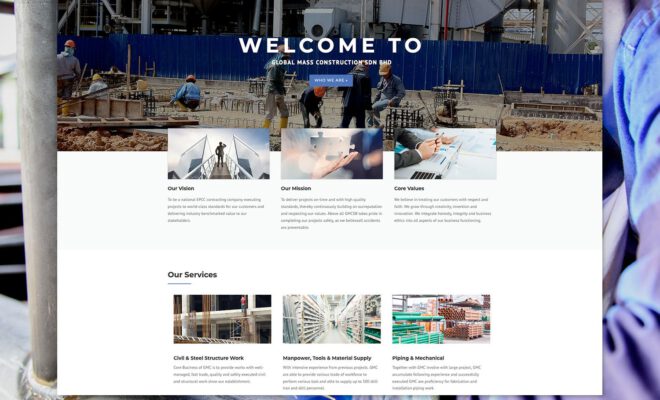What is Brand Monitoring and why is it Important?- Complete Guide

Brand Monitoring allows you to get immediate rewards from your actions when done right. We explain what it is, the benefits, and share our “in-the-trenches” experience on how you can keep a watchful eye on what people are saying about your brand and business at minimal expense and time investment.
With an increasing lack of control over how your brand is mentioned, plus all the trolls pouring out from various media channels, spilling bile and up to no good it’s no wonder businesses are serious about brand monitoring.
Read on, and discover all you need to know.
Here is what we will go over:
- What is Brand Monitoring
- The Value of Brand Monitoring
- Brand Monitoring: Elements and Tips
- Brand Monitoring Tools
What is Brand Monitoring
Brand Monitoring is the practice of keeping an eye out for how your brand is mentioned across various channels with the ultimate aim of preserving the image of your brand.
Simply put, you want to discover where the conversation about your brand is taking place, how it’s been talked about in order to understand what people think about it so you can react appropriately.
If questions are being asked or concerns raised, you’d want to provide the answers and appropriate information. If there are negative mentions, you sure want to control the narrative before irreparable damage is done. These in a nutshell is what brand monitoring is about.
The Value of Brand Monitoring
This may sound like common sense,but you never can tell. And really, if you don’t see the importance of brand monitoring to your overall business success, why bother?
Following are ways in which brand monitoring can benefit your business:
Provides Deep Insight Into Your Market’s Point of View
Everyone who works in the marketing and branding space knows and appreciates the importance of consumer sentiment. When we talk about the point of view from a branding perspective we really mean the bias expressed towards or against a particular brand.
Other forms of matrix can help you “get” your audience, however none does it better and faster in the same sense that brand monitoring can. For example, the language used to express an opinion on social media can provide a deep insight into the gut feeling of your market – providing valuable information beyond what is said.
Why it is important:
How often do we think we’ve got the best product in the world only to see the market react to it differently? It’s happened to the best of us. Keeping tabs on the sentiment surrounding your brand – whether it is reactions to ad campaigns, promotions, or messaging, allows you to make informed decisions that are trend led.
Many viral campaigns are powered this way.
Reputation Management
Right now, if you observe keenly, it appears trouble is just a click away. As a general rule, crises and negative news sells faster. So be assured, you’ll often get a fair share of a negative comment or feedback getting blown out of proportion. Catching a whiff of it on time allows you to control the narrative and spin it to your favor
Why it is important:
Reputation is directly proportional to trust. A brand that is trusted can be sold. Plus, making an effort to respond to crises shows the kind of brand you are and how much you value your customers. In the end, there is only one winner – you.
Provides an opportunity for improvement
Paying attention to the feedback you get from your customers shouldn’t be treated as a tag along – rather a crucial business decision. Is it important? Very. Should you monitor them? Not if you want to remain competitive! Remember, you are in business for your customers so listen to what they are saying (especially those that are unflattery) and do so promptly.
Power play: We strongly advise you have an established process in place to deal with feedback promptly. For example, a eCommerce brand should be able to forward a complaint on delayed shipping expressly to a dedicated support team that addresses such issues.
Why it is important:
Feedbacks highlight areas where you are doing well, which means you can double down on such areas. Also, with feedback, you can have your attention drawn to areas of weakness – sometimes organizations would spend lots of money and go through lots of testing to discover. This knowledge serves as inspiration for new products, services, corrections, upgrades, and general improvements thus earning you customer loyalty and more business down the road.
● Direct one-on-one conversation
Struggling to get heard? Problem might be you’re in an echo chamber – your audience is somewhere else. With brand monitoring, you can quickly tell where the conversation is taking place. And better still, join.
Why it is important:
Direct one-on-one conversation in a laid back ambience like you’d find on social media is very important for marketing.
By joining in on the conversation with “the tribe” as they happen, answering questions, and replying to comments promptly, gives your audience the impression you care and that you value their opinions. This goes to position your brand as one that is available, accessible, and helpful. In an age of short consideration span, this will win you more raving fans and direct access to wallets.
●Leverage user-generated content
We’re pretty confident you’ve seen it before: brands sharing the testimonials of their customers or pictures of them using their products. That is peak use of user generated content (UGC) right there. They come in different forms, but with very similar powerful impact!
Why it is important:
By monitoring your brand, you can see how content regarding your brand is being shared and can use this to augment existing content strategy. And because they are very believable (since the audience can resonate with the messaging), the interaction and conversion associated with user generated content can go through the roof quickly. Wouldn’t you like that?
Brand Monitoring: Elements and Tips
Back then in our not-so-experienced years, we made rookie errors. One particular one relating to our topic of discourse: we felt more was better and we applied that to our brand monitoring strategy. Needless to tell you, we failed, miserably too. Luckily that experience turned out to be a blessing in disguise. We learned valuable lessons that have saved us heaps of money, believe it or not.
The biggest lesson: Concentrate on a handful of channels. Resist the urge to want to keep track of every mention of your brand.
And that is your first tip right there.
Now unto some channels industry experts believe you should monitor…
Where to monitor for brand mentions
- Social Media – there are tons of them out there (we know), but it gets easier using monitoring tools. So, we strongly suggest you keep a close eye on all of them.
- Online news media – Local news media, industry news channels, and every credible news outlet with a web presence.
- Online review sites – you definitely don’t want to sleep on them. Reviews are too important, so show these websites all your brand monitoring love. Yelp, TripAdvisor, Better Business Bureau, Yellowpages, Manta etc. are some examples.
Tip: Some reviews are industry specific, start with those unique to yours.
- Question Answering sites and Online forums – Forums are not dead. Ensure you monitor forums popular in your niche. Then of course there is Reddit, Quora, Google Answers and so on.
- Print media (Less favored, unless you’ve got a deep pocket)
So you know where to look for mentions of your brand, what next?
Track the following elements about your brand.
Brand elements to track
It’s hard to tell literally how people will mention or interact with your brand. You just can’t tell.
However, we have a list of brand elements we track that have served us so well.
In fact, we see every big brand doing the same – these are elements any one needs to track if they want to get the best out of their brand monitoring efforts.
Here they are:
Name of brand and product/services (and variations)
This is huge and every brand should do this. However realize this – you have no control of how your audience would refer to your brand, hence the need to monitor the variations of your brand/product name.
Action:
Create a list of how your audience allude to your brand and product. A simple spreadsheet would do. The list should include:
- Campaign or product names
- Nicknames
- Website/Blog names
- Different spellings or misspellings
- Abbreviations
Additionally, note the tone and language of conversation in respect to the various channels. This would help inform your messaging. You want to come across as natural when interacting with people in their respective hangouts.
Tip: Use keyword research tools to unearth these terms. (See the next section for Brand Monitoring tools).
Similar Competitors in your industry
As marketers, we would like to explain this from a marketing point – gathering intel on your competitors is golden. Monitoring your competitors allows you to see what is tickling the fancy of their audience as well as keep abreast of the trends.Knowledge gleaned from monitoring your competition might just be what you need to surpass them in reach, engagement and ultimately sales.
Why is this important?
It provides you with a benchmark that can be used to figure how your brand compares in your niche. And it also gives you an idea of what will work in your industry right out of the gate. Additionally, you want to discover what your competitors are doing right or wrong so you can emulate or capitalize on them.
Action:
Plug the names and the variations of your competitors’ names in one of the brand monitoring tools like you did above for yours.
Tip: Truth is, you will be dealing with plenty of metrics and data. This can be overwhelming. Hire a professional to help you make sense of the clutter so you can concentrate on other aspects of your business.
Finally, a note of warning:
Monitoring your competitors is very important. It should help push your services and product to become better so it can offer the best value to the market.
Trends and Buzzwords
This applies no matter your niche. You’ll agree every niche does have their specific buzzwords and trends – obviously these are where the attention is at a particular point in time. So you want to keep your ears to the ground to discover them. By taking note or joining these conversations, you prop up the relevancy and trustworthiness of your brand even when your brand has not been mentioned.
Action:
Create content around these buzzwords and trends.
Tip: Do not be banal when joining the conversation – spice things up in a unique way that sets you apart from the rest of the crowd.
Pro Tip: Use Google Trend ( a free online tool) to catch trends in your industry.
Mentions of Employees
Now this does not in any way suggest you are stalking your staff. What it means: monitor the mentions of the CEO and other high-ranking staff members as well as your most popular employees. Because good or bad, publicity around them can have an impact on your brand.
Influencers and public figures
As with your employees, track the mentions of notable individuals in your industry. It is important for two reasons: One, they can influence public perception about a brand, and secondly, they are newsmakers. Being top of the conversation around these sets of individuals allows you to tap into their fan base or react appropriately and promptly when your brand is mentioned.
Tip: Work with influencers to help promote your brand – the goodwill and trust their followers have towards them is automatically transferred to your brand. Don’t know who the influencers in your niche are? Use BuzzSumo to discover them.
Brand monitoring tools
So you’ve been trying to keep track of your brand mentions or would love to start. You see others do it. And it seems like your competitors make it look so easy.
Unfortunately, for some reason success eludes you or you don’t even know where to begin. Things will change after today. Because the aim of this chapter is to arm you with the same tools that professionals like ourselves use. So give these tools a try and see if they don’t work for you too.
Google Alerts
If you want to monitor your brand (or your competitors) for free, quickly without hassle, this tool is pure gold!
Here is how it works:
Basically, all you need do is create an alert and input the keywords you want to monitor and you’re all set to receive emails when they are used online.
By the way, you can use google alerts to monitor all and any of the elements we discussed earlier.Also, it can be tweaked to deliver so much more. We recommend creating a google alert now if you haven’t done so. Remember, it is free, so zero risk.
Ahrefs
Although an SEO tool par excellence – Ahrefs is equally as valuable as a proper brand monitoring tool.
With Ahrefs you can:
- See the keywords driving traffic to your site
- Discover those websites sending in traffic (important in discovering where your brand is popular)
- Research your competitors – see their popular content, keywords and other valuable insights
- Unearth valuable terms, keywords used to refer to your brand
- And many more.
The only downside: it is not a free tool. However, you can take advantage of a cheap 7 days trial.
Be assured there is so much Ahref can do for your business making every penny spent worth it and cementing its place as one of the most sought after tools in today’s marketing space.
BuzzSumo
First BuzzSumo does an incredibly good job in helping you discover the most popular content across various channels online. And as far as brand monitoring goes: it allows you to set a similar alert like Google Alerts and also can help you discover popular influencers in your industry.
Boardreader
Rather than concern yourself with manually crawling forums and comment sections to discover discussions around your brand or any particular keyword of interest, let Boardreader handle it. Particularly designed for boards and forums, it is one its kind in the market today.
Mention
As a monitoring tool, Mention does what is written on the tin. It can monitor and analyze brand mentions from over 1 billion web sources. Additionally, you can also use it to gauge brand perception, research your competition, schedule social media content among many other useful functions.
Bonus Tool: Think with Google
This is a perfect tool that provides users with ideas, insights, and trends. It is also perfect for marketing research as well. What you do is sign up and use any of the tools. In your case, Google Trends, Market Finder, Find My Audience etc. Don’t stop there, ensure you take advantage of all the resources onsite to improve your business.














